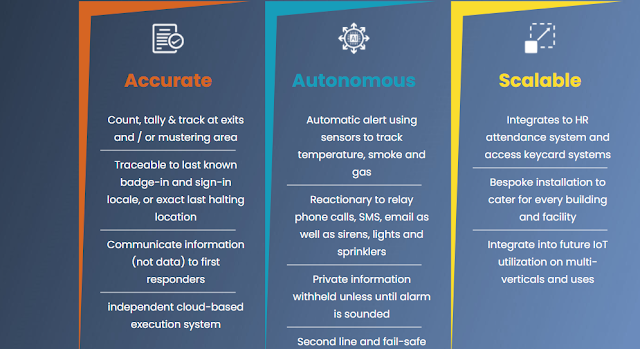Fire monitoring systems are designed to discover fires early in their development when the time will still be available for the safe evacuation of occupants. Early detection also plays a significant role in protecting the safety of emergency response personnel. Human and property loss can be reduced and downtime for the operation minimized through early detection because control efforts are started while the fire is still small. Most alarm systems provide information to emergency responders on the location of the fire, speeding the process of fire control.
To be useful, detectors must be
coupled with alarms. Alarm systems provide notice to at least the building
occupants and usually transmit a signal to a staffed monitoring station either
on or off-site. In some cases, alarms may go directly to the fire department,
although in most locations this is no longer the typical approach.
Did you know that there are
actually four different types of fire monitoring systems that are used to sense
the presence of a fire? The best way to determine which kind of fire monitoring
system is the right choice for your business or building is to understand the
differences between them. The four various types of fire monitoring system are ionization/photoelectric, photoelectric,
ionization, and heat. The differences in these four types are found in how they
detect a fire – heat is obviously triggered by temperature while the other
three are from the smoke.
Ionization
Ionization fire monitoring system
actually have a constant electrical current running between two metal plates
inside of the device. The electrical current is disrupted when smoke enters the
device chamber and triggers the alarm. This type of detector is great for
quickly identifying fires that are fast-burning.
Photoelectric
Photoelectric detectors work
similarly to Ionization detectors, but with a beam of light instead of
electricity. When smoke enters the chamber, the light beam is scattered, which
then triggers the alarm. This type of device is good at identifying smaller
fires than an ionization detector. They are known to be highly reliable and
rarely produce false alarms.
Heat
Heat detectors work by detecting an
increase in air temperature caused by flames. While these detectors have been
known to trigger a few false alarms, they have a longer reaction time than
other smoke detectors. False alarms may be triggered in buildings that are
abnormally steamy, dusty, or humid and are best suited for buildings that are
not continuously occupied such as warehouses or storage facilities.
Ionization/Photoelectric
A crowd favorite of many
professionals, combination ionization and photoelectric fire monitoring system is considered by many to be the best type of
detector. These devices house both types of smoke detectors (not heat) in one
unit to ensure that any presence of smoke is detected as soon as possible.
Afantagé`s good and efficient
emergency evacuation system equipment and hardware are almost 98 - 100%
accurate. It helps to count, tally & track at exits and/or mustering areas.
It is traceable to the last known badge-in and sign-in locale, or the exact
last halting location. It helps to communicate information (not data) to first
responders through an independent cloud-based execution system. It is
autonomous. RFID reader provider from Afantagé has an automatic alert using
sensors to track temperature, smoke, and gas that operate at multiple
frequencies for different countries. It is reactionary to relay phone calls,
SMS, email as well as sirens, lights, and sprinklers. All private information
is withheld in the system unless the alarm is sounded. Afantagé with its
non-obstructive installation procedure for the fire monitoring system is second in line and all its fail-safe
measures work at a variety of angles. In addition, the ownership cost,
maintenance, and licensing of Afantagé`s equipment and hardware are highly
economical. To know more, visit- https://www.afantage.com/




